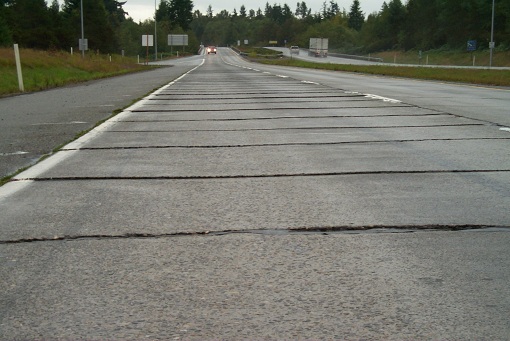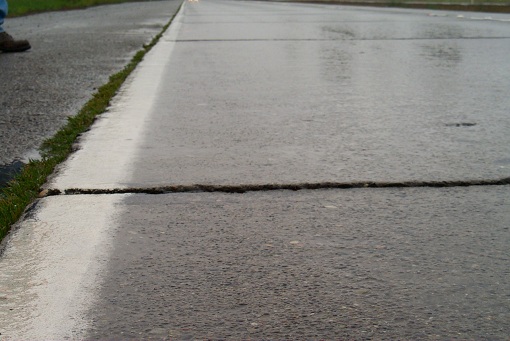Description
A difference in elevation across a joint or crack usually associated with undoweled JPCP. Usually the approach slab is higher than the leave slab due to pumping, the most common faulting mechanism. Faulting is noticeable when the average faulting in the pavement section reaches about 2.5 mm (0.1 inch). When the average faulting reaches 4 mm (0.15 in), diamond grinding or other rehabilitation measures should be considered (Rao et al., 1999[1]).
|
|
Figure 4. Pumping and faulting failure mechanism described.
Problem
Possible Causes
Most commonly, faulting is a result of slab pumping. Faulting can also be caused by slab settlement, curling and warping.
Repair
Faulting heights of less than 3 mm (0.125 inch) need not be repaired. Faulting in an undoweled JPCP between 3 mm (0.125 inch) and 12.5 mm (0.5 inch) is a candidate for a dowel bar retrofit. Faulting in excess of 12.5 mm (0.5 inches) generally warrants total reconstruction.
- Longevity of Diamond-Ground Concrete Pavements. Transportation Research Record 1684. Transportation Research Board, National Research Council, Washington, D.C. pp. 128-136.↵



